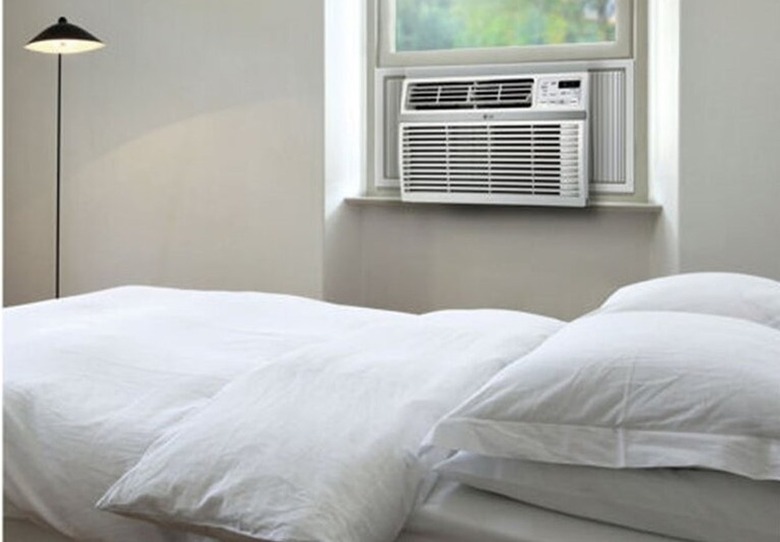How To Remove Water In An LG Air Conditioner
We may receive a commission on purchases made from links.
You may be surprised to find water draining or leaking from your LG air conditioner. Water isn't typically the first element that comes to mind when thinking about cooling the air, but it plays a critical role in the process. Some water is part of normal operation for LG air conditioners and will need to be drained from the unit from time to time. However, be on the lookout for excessive leaks, which could indicate an issue.
Removing Water With a Hose
Removing Water With a Hose
Condensation is a natural part of the air-cooling process. As the warm air from the room hits the cool evaporator coils, the water in the air separates and collects as condensation. The cooler, drier air is returned to your home or workspace. This is called the dehumidification process.
If you have an LG portable air conditioner, there are two ways to remove the collected water. The first option is to attach a 10 millimeter inner diameter hose to the back of your LG A/C unit, making sure that the open end of the hose leads to somewhere outdoors or to a collection pan. As you run the unit in dry, or dehumidification, mode, excess water will drain through the hose.
The second option is to remove the drain cap at the bottom of the unit and tilt the unit backward. The water will pour out, so make sure you've placed a shallow pan under your air conditioner. As you probably guessed, places with climates higher in humidity will require draining the unit more frequently than drier areas. A normal range for draining could be anywhere between six hours and several weeks.
Leaking and Excess Water
Leaking and Excess Water
While a couple of inches of water is needed for proper functioning of LG through-the-wall and window A/C units, too much water means something is amiss. If your LG A/C is leaking water inside your home, then it's possible that it was improperly installed. Both window and through-the-wall units must be tilted from front to back by 1/4 inch to 1/2 inch. Properly positioning your A/C unit during a DIY installation could prevent leaks from occurring.
In times of extremely high humidity, the base pan of your A/C may overflow. To drain the base pan in a window or wall model, push a drainpipe into the drain hole after removing the cap. A drainpipe should come with your specific make and model, but you can also purchase a replacement. Be sure to check the specific measurements of the A/C drain hole and drainpipe you choose to purchase. Allow the excess water to flow out and replace the cap when finished.
Preventing LG Air Conditioner Leaks
Preventing LG Air Conditioner Leaks
When functioning optimally, a through-the-wall or window A/C unit will automatically drain condensation to the outside of the home. However, a blockage in the drainpipe or detritus in the water collection pan can cause backup, overflow, and a leaky mess inside your home. Clean these components with water and possibly white vinegar depending on the severity of the buildup.
A regular cleaning and upkeep routine for your LG A/C unit will keep it functioning efficiently. This includes cleaning the air filters, evaporator coils, condenser coils, and grilles. Always consult your owner's manual for specifications.
